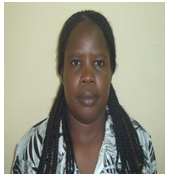Zambia Overview

Background
Zambia is a sub-Saharan country of 753,612 square kilometers. In 2010, its population was 13,046,508 with 61% (7,978,274) in rural areas and 39% (5,068,234) in urban areas. The average annual population growth rate between 2000 and 2010 was 2.8%
The major administrative units are provinces which are sub-divided into districts. Within the districts, the administrative units are Chiefdoms and Constituencies. Constituencies are made up of Wards.
Health Systems Infrastructure
The health systems infrastructure is categorized as:
a) Health Posts: Intended to cater for populations of 500 households
b) Health Centres
c) 1st Level Referral Hospitals: These are found in most of the districts
d) General Hospitals: These are 2nd level hospitals at the provincial level; these act as referral centres for the 1st level institutions.
e) Central Hospitals; these hospitals also act as referral centres for 2nd level hospitals.
The HIV Epidemic in Zambia
Among Zambian adults aged 15 – 49; current HIV prevalence is 14.3%, a slight decline from the 15.6% prevalence reported in the 2001/2002 Zambia Demographic and Health Survey (2001/2002 ZDHS). The epidemic in Zambia is dramatically gender-based with 16% of women aged 15-49 HIV positive compared to 12% of men aged 15-49 HIV positive. Overall, HIV prevalence in urban areas is twice as high as in rural areas (20 and 10%, respectively). Data from the 2006 Antenatal Care Surveillance Survey (2006 ANCSS) and the 2007 DHS highlight six key drivers of the HIV/ AIDS epidemic in Zambia. These are: 1) high rates of multiple and concurrent partnerships (MCP); 2) low and inconsistent condom use; 3) low rates of male circumcision (MC); 4) population mobility; 5) vulnerable groups with high risk behaviors; and 6) mother to child transmission (MTCT). In addition, other factors such as gender inequality, income disparity, socio-cultural practices, and stigma interact with the drivers to sustain high levels of risk and vulnerability.
Background of the National QI Program
Over the past 2 years, Zambia has undertaken strides to harmonize Quality Improvement (QI) systems and efforts are being made by individual implementing partners to assure quality health service delivery to its people. Zambia has undertaken a variety of capacity building activities aimed at improving the quality of health care delivery in the country.
The Ministry of Health has been responsible for the development of the Quality Improvement guidelines, training curricula and national core indicators; CDC Zambia has provided technical assistance in these processes. A technical working group (TWG) was established two years ago, designed to function as the Zambia QI steering and advisory committee. This committee maintains oversight of the national program.
QI Achievements
a) Established QA/QI Unit at MOH
b) Established National TWG led by MOH
c) Inclusion of a national QI chapter in the National Health Policy
d) 2005 Introduction of Performance Improvement Approach (PIA)
e) Development of QI Guidelines for Health Care Providers in Zambia); as well as dissemination of these guidelines and tools (including PIA training manuals) at all levels.
f) Finalization of PIA training manuals; as well as training of trainers in PIA at all levels
g) Strengthening of the provincial, district, and facility Quality Improvement committees
h) Setting up of indicators for monitoring the quality of services in the ART program
i) Support for accreditation activities that defined 48 minimum performance standards and measurable criteria for Zambia’s Hospitals.
j) Dissemination of QI best practices at major conferences. One national QI workshop is planned for 13th and 14th September this year.
In the near future, the QI TWG will work on an operational plan for coaching and mentoring, an annual organizational assessment, and regular communication with facilities to support and collect QI project information.
Sustainability
• Ministry of Health has QA/QI incorporated in the National Health Strategic Plan and the yearly work plan matrices to ensure it has an apportioned share of the budget. It is also ensuring that other service program areas incorporate a small budget to support QI activities in their respective budgets
• Formation of QA/QI committees at all levels of health care delivery and provision of QA Guidelines and supportive framework to facilitate their functions.
• Partners like ZISSP, ZPCT, EGPAF, CIDRZ and AIDS Relief are supporting the Ministry in building the capacity of QA/QI through staff secondment, trainings and production of guidelines and QI training materials.
Team/Leadership

Ms. Rachael Lungwebungu
QA/QI Nurse
Ministry of Health

